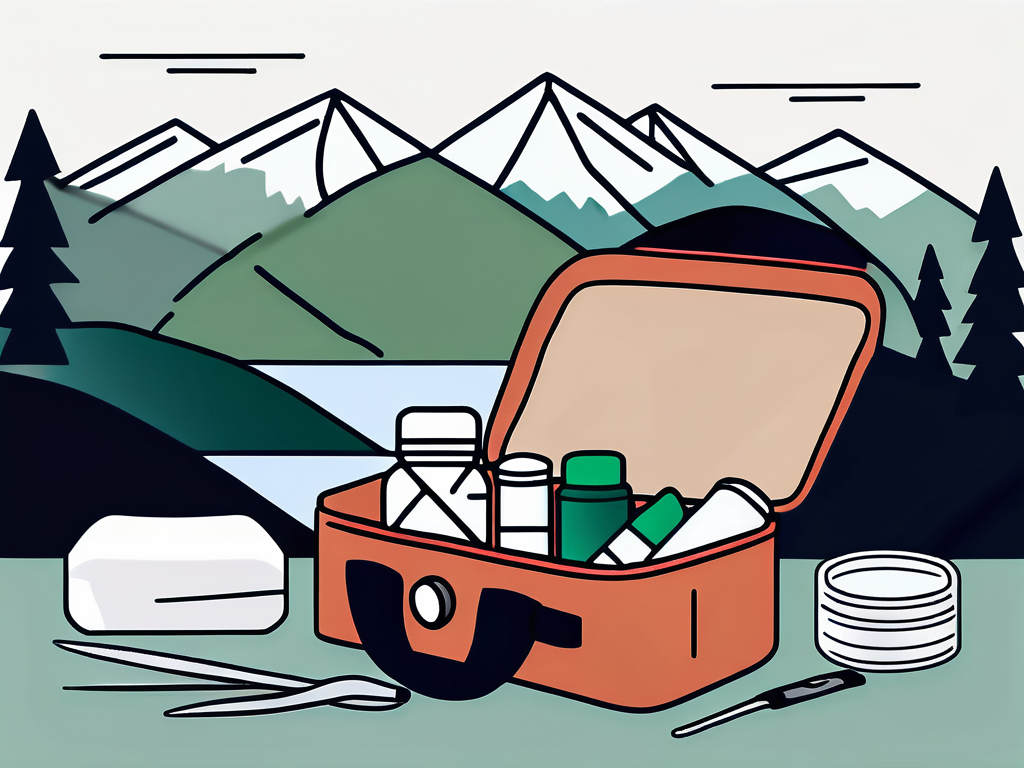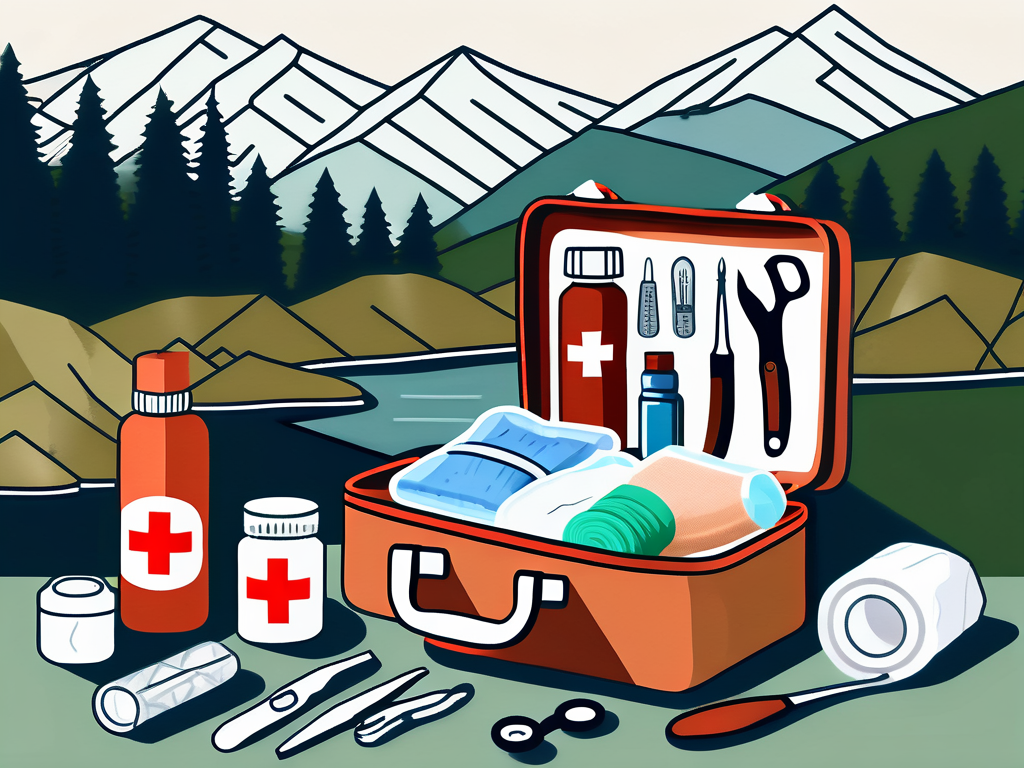Outdoor adventurers love exploring nature, whether it be hiking in the mountains, camping in the wilderness, or embarking on thrilling outdoor activities. However, along with the excitement, there is always an inherent risk of accidents and injuries. That is why having a good understanding of emergency first aid skills and carrying essential first aid kits is crucial for every outdoor enthusiast. In this article, we will explore the importance of first aid in outdoor adventures and provide valuable information on the skills you need, building your first aid kit, maintaining it, and even the benefits of first aid training. So, let's dive in!
Understanding the Importance of First Aid in Outdoor Adventures
When engaging in outdoor activities, especially in remote areas, the availability of professional medical help may be limited. In such situations, knowing how to administer immediate first aid can make all the difference between life and death. First aid is not just about preventing further harm; it plays a critical role in survival.

The Role of First Aid in Survival
First aid is the initial medical assistance given to an injured or ill person before professional medical help arrives. It is essential for preserving life, preventing further injury or illness, and promoting recovery. In survival situations, where accessing advanced medical care might not be possible, your first aid skills can be the lifeline that keeps you and your adventure companions safe.
Risks and Common Injuries in Outdoor Adventures
Outdoor activities come with their fair share of risks. From sprained ankles and cuts to more severe injuries like fractures or even cardiac emergencies, outdoor enthusiasts need to be prepared for any situation. Understanding the common injuries that can occur during outdoor adventures can help you plan and equip yourself appropriately.
One of the most common injuries in outdoor activities is a sprained ankle. This injury can happen while hiking on uneven terrain or participating in high-impact sports. Knowing how to properly assess and treat a sprained ankle can prevent further damage and expedite the healing process, allowing you to continue with your adventure.
Moreover, cuts and wounds are prevalent in outdoor environments where sharp rocks, branches, or tools can cause injuries. Understanding the importance of cleaning and dressing wounds promptly can prevent infections and complications. Carrying a well-stocked first aid kit with antiseptic wipes, bandages, and wound closure strips is crucial for managing such injuries effectively.
Essential First Aid Skills for Outdoor Enthusiasts
Now that we understand the importance of first aid in outdoor adventures, let's explore the skills every outdoor enthusiast should have. These skills are invaluable and can potentially save lives in critical situations.

When venturing into the great outdoors, having a solid foundation in first aid can make all the difference. In addition to the basic first aid procedures, there are additional skills that can enhance your ability to respond effectively to emergencies.
Understanding the principles of triage can be crucial in situations where multiple injuries occur. Triage involves assessing the severity of injuries and determining the order in which they should be treated, ensuring that those in critical condition receive immediate attention.
Basic First Aid Procedures
Basic first aid procedures everyone should know include how to perform CPR (cardiopulmonary resuscitation), assess and treat wounds, stabilize fractures, manage burns, control bleeding, and administer essential medications like epinephrine for severe allergic reactions.
Handling Outdoor-Specific Injuries
Outdoor environments present unique challenges and risks. Being familiar with handling outdoor-specific injuries, such as snake bites, heatstroke, hypothermia, or frostbite, is essential. Learn how to identify these injuries and provide the appropriate first aid measures promptly.
Dealing with Weather-Related Conditions
The weather can change rapidly during outdoor adventures. It's crucial to know how to identify and respond to weather-related conditions, such as heat exhaustion, dehydration, or even lightning strikes. Proper first aid techniques can help mitigate the risks associated with these conditions.
Moreover, understanding the effects of altitude sickness and how to manage it can be vital for those exploring high-altitude environments. Recognizing the symptoms early and knowing how to provide immediate care can prevent the condition from escalating.
Building Your Outdoor First Aid Kit
Now that you have a good understanding of the essential first aid skills for outdoor adventures, it's time to assemble your first aid kit. A well-stocked and well-organized kit can help you respond effectively to emergencies, ensuring the best possible outcomes.
When venturing into the great outdoors, it's crucial to be prepared for any medical emergencies that may arise. Having a comprehensive first aid kit can make a significant difference in providing timely care and potentially saving lives. In addition to the basic supplies, consider adding items like a CPR mask, a splint, a cold pack, and a whistle for signaling for help in case of emergencies.
Must-Have Items in Your First Aid Kit
Every outdoor adventurer should carry a first aid kit containing supplies to handle common injuries. Some must-have items include bandages, adhesive tape, antiseptic wipes, sterile gauze pads, tweezers, scissors, gloves, an emergency blanket, and pain relievers. Customize your kit based on the specific activities you engage in and the environment you explore.
It's also essential to include personal medications and any specific items needed for individuals with known medical conditions. Consider adding items like blister pads, insect repellent, sunscreen, and a small guide on basic first aid procedures to enhance the versatility of your kit.
Choosing the Right First Aid Kit for Your Adventure
When selecting a first aid kit, consider factors such as the duration of your adventure, the number of people in your group, and the remoteness of your location. Off-the-shelf kits may not always meet your specific needs. Therefore, it is advisable to assess your requirements and create a personalized kit or invest in a quality pre-packaged kit designed for outdoor activities.
Remember to periodically check and replenish your first aid kit to ensure that all supplies are up to date and in good condition. Familiarize yourself with the contents of the kit and know how to use each item effectively. Being well-prepared with a properly equipped first aid kit can give you peace of mind and confidence to handle unexpected medical situations during your outdoor excursions.
Maintaining and Upgrading Your First Aid Kit
Once you have assembled your kit, it's crucial to regularly maintain and upgrade it to ensure its effectiveness. Here are some tips to keep your first aid kit in optimal condition.
Proper maintenance of your first aid kit is essential for ensuring that it is ready for any emergency situation. In addition to checking for expired items, it is also important to periodically review the contents of your kit to ensure that it is tailored to your specific needs. Consider the activities you engage in regularly and adjust your kit accordingly. For example, if you frequently hike in remote areas, you may want to include items such as a snakebite kit or a compact emergency blanket.
When to Replace First Aid Supplies
Inspect your first aid kit periodically and replace any items that have expired, become damaged, or show signs of deterioration. Make it a habit to check the contents before every outdoor adventure to ensure you have everything you need.
Furthermore, it is advisable to familiarize yourself with the proper use of each item in your first aid kit. Consider taking a first aid training course to learn how to effectively utilize the supplies in your kit in case of an emergency. This knowledge can make a significant difference in providing timely and appropriate care to yourself or others in need.
Adding Advanced Items to Your Kit
Consider adding advanced items to your first aid kit as you gain more experience and expertise. These may include specialized items like tourniquets, splints, SAM Splints for fractures, or even emergency medications prescribed by a healthcare professional.
Moreover, customization is key when upgrading your first aid kit. Tailor it to your unique medical needs or those of your family members. For example, if someone in your household has a severe allergy, ensure that you have an epinephrine auto-injector in your kit. By personalizing your kit in this way, you can be better prepared to handle any medical emergency that may arise.
First Aid Training for Outdoor Adventurers
Beyond having the necessary skills and a well-stocked first aid kit, it is highly recommended that outdoor adventurers undergo formal first aid training. The benefits of such training are numerous.

Benefits of First Aid Training
First aid training equips you with the knowledge, confidence, and skills to handle emergencies effectively. You will know how to assess situations, make informed decisions, and provide appropriate care until professional help arrives. Additionally, first aid training enhances your situational awareness, enabling you to anticipate and prevent potential emergencies.
Finding the Right First Aid Course for You
When choosing a first aid course, consider reputable organizations that specialize in wilderness or outdoor first aid training. These courses often cover specific scenarios and challenges that outdoor adventurers may face. Look for accredited courses taught by experienced instructors who can provide practical and hands-on training.
By prioritizing emergency first aid skills, carrying a well-stocked first aid kit, and undergoing relevant training, outdoor adventurers can significantly enhance their safety and the safety of those around them. Remember, being prepared is the key to enjoying adventure while minimizing risks. So, before your next outdoor expedition, invest in your safety by equipping yourself with the essential skills and kits needed to handle any situation that may arise. Stay safe, and happy exploring!
